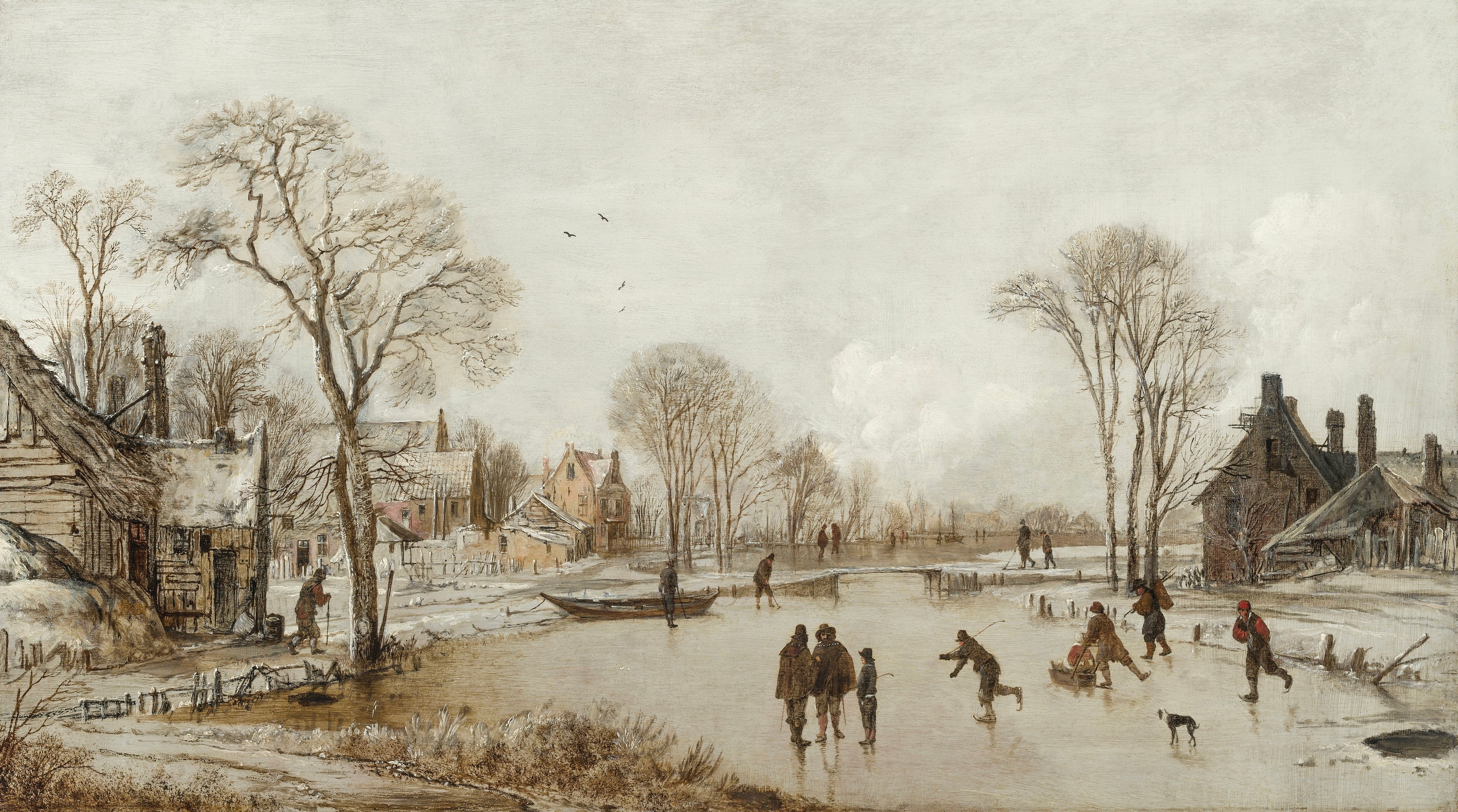
The “Little Ice Age” of the 17th century influenced society and art in the Netherlands. Pieter Bruegel and Aert van der Neer depicted life in winter, from harsh hardship to cheerful ice skating. The ice symbolizes both pleasure and mortal danger.
Winter, art and life in transition
Over the course of the 16th century, a spectacular fall in temperature changes the climate in much of Europe and was also to last throughout the 17th century: this is the “Little Ice Age.” The result is a dramatic food crisis caused by a shortage of cereals, which mainly affects the densely populated cities that are dependent on food imports. This leads to a worsening of the situation already fuelled by political and religious conflicts, in which the continent’s economy and society find themselves in the early modern period. People are forced to adapt to the difficult circumstances of life, which in many places becomes a fight for survival.
This climate change is particularly reflected in Dutch art, as evidenced for example by Pieter Bruegel the Elder’s depictions of the four seasons at the Kunsthistorisches Museum in Vienna. In many individual scenes they describe how people try to brave the all-pervading cold on the one hand while surrendering to the pleasures of winter on the other.
Winter landscapes then became a separate field within Dutch painting in the 17th century. One of its outstanding exponents is Aert van der Neer in Amsterdam. He does not portray any fights for survival: the painter’s attention is focused here on the more cheerful side of winter, on ice-skating, which is popular among all the classes. They indulge in this pastime on big rivers and canals as well as on frozen village ponds. Of course, what always resonates here is the warning of sudden falls and the proverbial thin ice, which thereby comes to symbolise the vulnerability of all human existence. But the aspect of pleasure predominates. What was already popular fun in the past has established itself as a sporting discipline in today’s Netherlands: a long-distance race on the ice connecting a total of eleven cities, the Elfstedentocht.
Text: Ulrich Becker